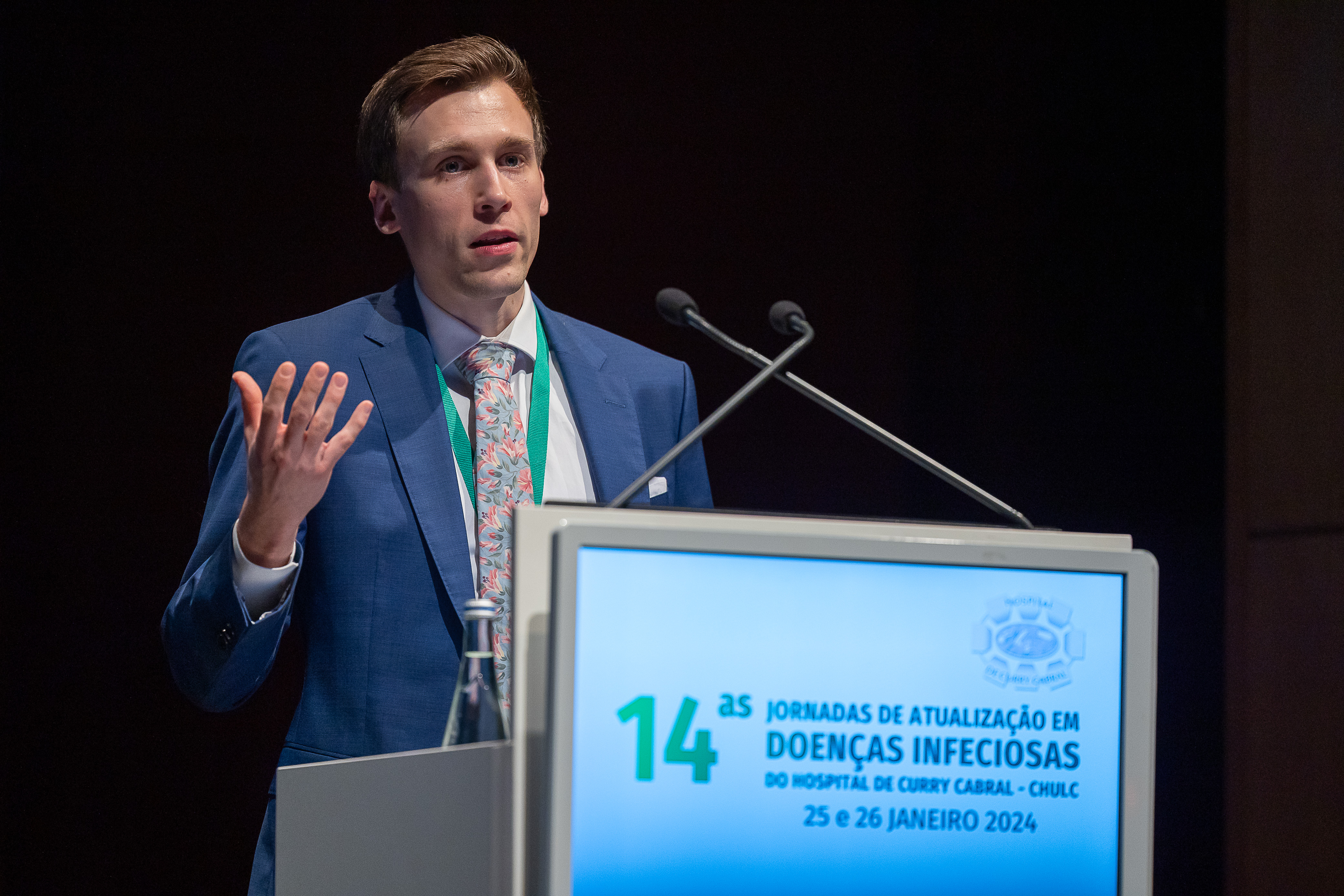Dr. Robin Schaefer presents on the future of PrEP

Materials
Introduction
Dr. Robin Schaefer of the Forum for Collaborative Research was invited to speak at the 14th Jornadas de Atualização em Doenças Infeciosas do Hospital de Curry Cabral, the largest conference on infectious diseases in Portugal, with over 600 participants. His talk “The future of pre-exposure prophylaxis (PrEP) for HIV prevention” focused on recent advances in the delivery of PrEP for HIV prevention, new PrEP products, and how to reach global HIV prevention goals. An article summarizing the presentation was published in the conference proceedings and is reprinted below.
The future of pre-exposure prophylaxis (PrEP) for HIV prevention
Globally, numbers of new HIV infections remain unacceptably high. There has been significant progress in reducing HIV incidence in some regions, notably in eastern and southern Africa, where there are the largest numbers of new infections; however, in other regions, epidemics have been stable or increasing.
Pre-exposure prophylaxis (PrEP) is the use of antiretroviral drugs by HIV-negative people to reduce their risk of HIV infection. It is a vital tool in efforts to combat HIV epidemics. The first PrEP product, an oral pill, was approved by the US Federal Drug Administration in 2012 and recommended by the World Health Organization (WHO) for all people at substantial risk of HIV in 2015. At the time of the WHO recommendation, PrEP use was nearly fully limited to the US. Since then, there has been a global increase in PrEP use, and, in 2022, there were an estimated 2.5 million people who used PrEP at least once. Despite this considerable increase in PrEP use, further growth is needed to meet the global target of 10 million PrEP users by the end of 2025.
PrEP is increasingly delivered through differentiated services, a trend accelerated by the COVID-19 pandemic, which often required service adaptations such as providing PrEP outside of healthcare facilities. Building on this experience, WHO published guidance to support differentiated PrEP services, defined as person- and community-centred approaches that adapt services to the needs and preferences of the people who are interested and could benefit from PrEP. Such adaptations can make services more acceptable and accessible and thus support uptake, persistence, and effective use. Examples of service adaptations include community-, pharmacy-, and home-based PrEP delivery (“where” to provide services), multi-month dispensing to reduce follow-up visits (“when”), integrated services (“what”), and task sharing with various health worker cadres and lay providers (“who”).
In addition to changing service delivery, another axis of differentiated PrEP is to allow for choice between PrEP products so that clients can choose the product that best suit their needs and preferences. Indeed, more PrEP products are becoming available. In addition to oral PrEP, WHO now recommends offering a vaginal PrEP ring and a two-monthly injection. More products are being investigated, including a six-monthly injection, which is evaluated in phase 3 clinical trials, and multipurpose prevention technologies (MPTs) that commonly combine contraception with an HIV prevention drug.
While the pipeline of new biomedical HIV prevention products is exciting, there are cross-cutting challenges. This includes how to demonstrate efficacy as placebo-controlled trials are no longer ethical, how to collect sufficient safety data, for instance for use of these products during pregnancy, and how to ensure efficient regulatory approval and product introduction. To address these cutting-edge scientific and regulatory questions through consensus-building, the Forum for Collaborative Research, a public-private partnership based at the University of California, Berkeley, has formed multiple working groups consisting of experts and representatives from regulatory agencies, industry, community, and normative bodies.
Differentiating PrEP situates PrEP services within the broader Political Declaration on HIV and AIDS, adopted by the United Nations General Assembly in 2020, which calls for person-centred HIV prevention approaches. Adapting services and offering choice is not just “nice-to-have”; it is necessary to ensure equitable access to PrEP and support effective use. Differentiated PrEP is the future of PrEP – it has to be to achieve global goals and combat the HIV epidemic globally.



